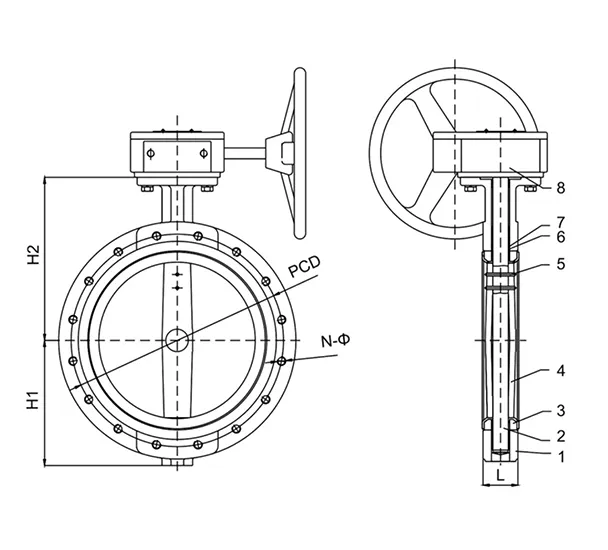Dec . 20, 2024 02:41 Back to list
low pressure check valve
Understanding Low Pressure Check Valves Functionality and Applications
Low pressure check valves are critical components in fluid systems, designed to maintain a unidirectional flow and prevent backflow under low pressure conditions. These valves play a vital role in various applications across multiple industries, including water supply systems, HVAC systems, and irrigation systems. This article delves into the functionality, design, and applications of low pressure check valves, highlighting their significance in fluid management.
Functionality of Low Pressure Check Valves
Check valves, in general, are automatic valves that allow fluid to flow in one direction while preventing it from flowing back in the opposite direction. Low pressure check valves are specifically engineered to operate effectively under low pressure conditions, typically ranging from 0 psi to 50 psi. Their primary function is to safeguard pumps and other system components from the damaging effects of backflow, which can cause pressure surges and potential mechanical failure.
These valves operate based on a simple principle. When the fluid pressure from the supply line exceeds that in the downstream line, the valve opens, allowing flow. When the pressure on the downstream side exceeds that on the upstream side, the valve closes, thereby preventing reverse flow. This mechanism is often facilitated by a spring or a gravity weight that assists in sealing the valve when the pressure differential is lost.
Design Features
Low pressure check valves come in various designs to accommodate different fluid types, pressures, and installation requirements. Some common design types include
1. Swing Check Valves These valves use a swinging disc that opens when fluid flows in the forward direction. They are popular in low-pressure applications where minimal pressure loss is desired.
2. Lift Check Valves These employ a movable disc or piston that rises to allow flow and falls to block backflow. They are suitable for applications with a more controlled flow rate.
3. Ball Check Valves Featuring a ball that sits in a seat, these valves open when the fluid pressure pushes the ball off the seat and close when the pressure decreases. This design is particularly effective for low-pressure applications.
low pressure check valve

Materials used in manufacturing low pressure check valves are also crucial, as they must withstand the operating fluid's characteristics, such as corrosiveness, temperature, and viscosity. Common materials include brass, stainless steel, PVC, and various elastomers for seals and gaskets.
Applications
Low pressure check valves find applications in numerous fields. Here are a few noteworthy examples
1. Water Supply Systems In municipal water systems, low pressure check valves help maintain water flow and pressure while preventing contamination from backflow. Their installation ensures that clean water supply is protected from pollutants.
2. HVAC Systems In heating and cooling systems, these valves protect pumps and other components from the damaging effects of returning fluids, thus enhancing system efficiency and longevity.
3. Irrigation Systems In agricultural and landscape irrigation, low pressure check valves prevent back siphoning, ensuring that fertilizers and pesticides do not contaminate the main water supply.
4. Industrial Processes Various manufacturing processes utilize low pressure check valves to regulate fluid flow, ensuring process stability and protecting sensitive equipment from reverse flow damage.
Conclusion
Low pressure check valves are indispensable components in fluid management, functioning to ensure the smooth and safe operation of various systems. Their ability to prevent backflow not only protects equipment but also enhances the overall efficiency of fluid systems. As industries continue to evolve and develop innovative fluid handling technologies, the importance of low pressure check valves is likely to grow, making them a vital consideration for engineers and system designers alike.
Understanding the functionality, design options, and applications of low pressure check valves is essential for anyone involved in fluid system engineering or maintenance. By selecting the appropriate valve type and material, professionals can enhance system performance and ensure compliance with safety standards, thus protecting investments and ensuring reliability across various applications.
Share
-
Reliable Wafer Type Butterfly Valves for Every IndustryNewsJul.25,2025
-
Reliable Flow Control Begins with the Right Ball Check ValveNewsJul.25,2025
-
Precision Flow Control Starts with Quality ValvesNewsJul.25,2025
-
Industrial Flow Control ReliabilityNewsJul.25,2025
-
Engineered for Efficiency Gate Valves That Power Industrial PerformanceNewsJul.25,2025
-
Empowering Infrastructure Through Quality ManufacturingNewsJul.25,2025